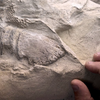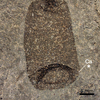Explore the Lost Cities of the Silk Road

Lidar mapping of Tashbulak, one of the lost cities discovered in Uzbekistan
Post Author - Ellis Nolan
“The Silk Road,” as the numerous pathways forged between Asia and western Europe have come to be known, was once the lifeline of trade between these two regions, and is a topic of constant anthropological and paleontological interest. While most routes along the Silk Road are known to have avoided the harsh environments of the central Asian mountain ranges, new research may have uncovered two lost cities among the heights, with trade and even potential manufacturing hubs to boot.
In 2011, mounds in the landscape of eastern Uzbekistan caught the eyes of archaeologists hiking through the area, who thought they might be remnants of a past civilization. Upon further investigation, the researchers found evidence of ancient pottery, as well as another structure thought to be an ancient citadel. Since then, archaeological digs have revealed coins from around the region as well as the remains of elderly and young inhabitants, suggesting that the city was not only a center of transactions but also had permanent citizens. Archeologists have now hypothesized that the region was home to two medieval cities, dubbed “Tashbulak” and “Tugunbulak.”
Since the initial discovery of the two cities, the archaeologists have “piloted” a new technique for studying the remains of ancient urban structures. Using uncrewed aerial vehicles (UAVs) equipped with a technology called lidar (light detection and ranging), the researchers created something similar to a topographical map of the two areas. They were then able to feed this information into a computer program that helped them determine human-made structures in the topography.

The Silk Road. (source: Encyclopædia Britannica)
These techniques are far less expensive than previous methods, which sometimes required chartering small aircraft in order to survey large areas. Furthermore, the computer models of potential sites of archaeological interest have been tested against the results of actual digs in the Tashbulak site and have had positive results for the most part. One of the issues of using these new techniques is it’s impossible to determine whether a structure shown is one distinct creation or multiple smaller structures that were created and eroded over many years without digging up anything. That said, the results have still informed the researchers what to look for in archaeological digs, and they maintain the techniques are still in the early stages of development.
Part of what makes this discovery so remarkable is that civilizations at the altitude of Tashbulak and Tugunbulak just are not that common. According to the study, less than 3% of Earth’s entire population lives more than 2,000 meters above sea level, and only about 1% above 2,500 meters. Furthermore, since erosion is so rapid at these altitudes, much evidence of societies is quickly buried. As a result, many scientists assume not much is happening in these remote areas. The authors of the Uzbekistan study believe their work will help the archaeological community reconsider these areas, particularly surrounding the vibrant Silk Road paths. Perhaps even more lost cities are hiding in plain sight!
Featured Product
Joe Frazier Boxing Glove
Cool Things!

Is “Paul is Dead” Dead?: Unpacking One Of Pop Culture’s Most Enduring Conspiracy Theories

Scientists Discover Hooves and Skin in Preserved Dinosaur "Mummies!"
A dinosaur discovery just in time for Halloween! In a new analysis of a group of fossils from Wyoming, Scientists have determined this group of fossils are dinosaur “mummies,” with preserved skin and even hooves.

Scientists Record a Bat Catching Birds Mid-Flight!
Bats, birds, screeches, oh my! In a reverse-Hitchcock twist, a new study reveals that a species of European bat catches and eats birds mid-flight.
Specimen Deep Dives

The House that Ruth Built: The Story of the Old Yankee Stadium

The Queen of the Skies: the Story of the Boeing 747

Old Ironsides: The USS Constitution and the Start of the U.S. Navy
Long Form Articles

The Artist Behind the Macintosh: Susan Kare and Apple Computers
While the two Steves, Jobs and Wozniak, are the most well known faces behind Apple computers, equally important to the products and culture of the company were those who crafted the experience of using their computers through design. The most notable of these visual architects was Susan Kare, a designer responsible for “humanizing” Macintosh computers.

Can I Lick It? Yes You Can!
Have you ever been unable to tell if a fossil was really a fossil, but you were too embarrassed to admit it? Have you ever wanted to lick a fossil just because, but you didn’t want to risk judgment from your peers? Well, good news! You can kill two birds with one stone! Licking a fossil can actually help you determine if it’s the real deal or just another rock.

Is It Legal To Own a Meteorite: How to Start Your Outer Space Collection!
Meteorites are some of the rarest geological specimens to be found on Earth. Of course, since these stones are not of our world, purchasing them can sometimes be a confusing process. Is it legal to own a meteorite? In short, yes! Read on for help starting your cosmic collection!


















